EMSB dietitians travel from school to school visiting classrooms and cafeterias to talk to students about eating nutritious foods and being healthy. The EMSB in-class programs aim to teach students how to make healthy food choices and instill the values of eating nutritious foods and living a healthy lifestyle.
Elementary Schools
Read What You Eat
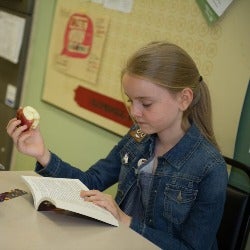 Every year the EMSB Read What You Eat Nutrition Education Program (also offered in French: Je lis ce que je mange) teaches students how to read food labels in order to make healthy food choices. This program also provides students with the knowledge and skills needed to develop an awareness of certain food marketing strategies, empowering them to become educated consumers. The importance of nutritional balance is emphasized, helping students develop a healthy relationship with food where all foods can have their place.
Every year the EMSB Read What You Eat Nutrition Education Program (also offered in French: Je lis ce que je mange) teaches students how to read food labels in order to make healthy food choices. This program also provides students with the knowledge and skills needed to develop an awareness of certain food marketing strategies, empowering them to become educated consumers. The importance of nutritional balance is emphasized, helping students develop a healthy relationship with food where all foods can have their place.
There are four different Read What You Eat activities which are tailored to the three cycle levels as well as kindergarten. The activities focus on different foods or beverages. All activities are hands on and interactive – educational and exciting!
Read What You Eat 1: Juice Activity
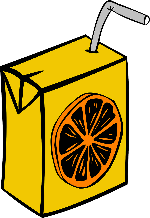
 This activity is focused on helping cycle 1 students distinguish between natural sugars and added sugars. Through playing a game, students learn that natural sugars are found in “Real Juices” and that added sugars are found in “Impostor Juices”. During the activity, we create our own “Imposter Juice” together, showing the students how misleading these beverages can be!
This activity is focused on helping cycle 1 students distinguish between natural sugars and added sugars. Through playing a game, students learn that natural sugars are found in “Real Juices” and that added sugars are found in “Impostor Juices”. During the activity, we create our own “Imposter Juice” together, showing the students how misleading these beverages can be!
Juice boxes are used to introduce label reading as students are familiar with them and the marketing language used is simple and easy to understand for this age level. We always encourage students to eat the whole fruit for the nutritional benefits as opposed to the juice and to stay hydrated with water.
Grade 1 students are asked to complete an Activity Sheet at home with their parents to determine if their juice is Real or an Imposter. Grade 2 students complete the Activity Sheet in class, time permitting.
Read What You Eat 2: Breakfast Cereal Activity
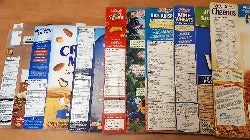 The goal of the activity is to help cycle 2 students learn to read food labels, specifically the ingredient lists and the nutrition facts table. The order of the ingredient list, the various names for sugar, the difference between whole grains and refined grains as well as the importance of fiber are discussed. Students are given a cereal box and work in teams to evaluate how nutritious their cereal is.
The goal of the activity is to help cycle 2 students learn to read food labels, specifically the ingredient lists and the nutrition facts table. The order of the ingredient list, the various names for sugar, the difference between whole grains and refined grains as well as the importance of fiber are discussed. Students are given a cereal box and work in teams to evaluate how nutritious their cereal is.
Guidelines are provided to students to ensure that the cereal (and other packaged foods) that they consume are nutritious. The key nutrients emphasized in this activity are fiber and sugar.
Read What You Eat 3: Sip Smart Activity
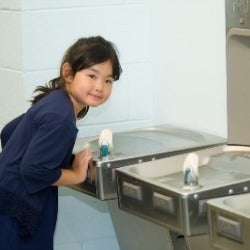 This activity helps cycle 3 students learn how to make healthier drink choices. The importance of hydration, the signs of dehydration, natural sugars vs. added sugars, the various names for sugar and food labels are discussed in this activity. Students are asked to calculate how many sugar cubes are added in various drinks.
This activity helps cycle 3 students learn how to make healthier drink choices. The importance of hydration, the signs of dehydration, natural sugars vs. added sugars, the various names for sugar and food labels are discussed in this activity. Students are asked to calculate how many sugar cubes are added in various drinks.
Students are encouraged to drink water when they are thirsty. For those who find water too plain, we suggest they try adding fruits, cucumber or herbs/spices such as mint or cinnamon to make it tasty and refreshing.
Fishing for Food
 We offer an introductory activity on Health Canada’s Eat Well Plate. The Fishing for Food activity (also offered in French: Le jeu de pêche) introduces the Eat Well Plate using visual aids and helps develop fine motor skills as students “fish” for healthy foods. Students are also encouraged to identify and name different foods that can make up a healthy plate.
We offer an introductory activity on Health Canada’s Eat Well Plate. The Fishing for Food activity (also offered in French: Le jeu de pêche) introduces the Eat Well Plate using visual aids and helps develop fine motor skills as students “fish” for healthy foods. Students are also encouraged to identify and name different foods that can make up a healthy plate.
Eat Healthy, Think Happy
 On demand, we also offer a body image activity targeted for cycle 3 students. The nutrition, fitness and lifestyle trends portrayed on social media platforms can have a great impact on students’ style of eating. This activity helps students gain insight regarding the various media influences that affect body image, self-esteem and eating habits.
On demand, we also offer a body image activity targeted for cycle 3 students. The nutrition, fitness and lifestyle trends portrayed on social media platforms can have a great impact on students’ style of eating. This activity helps students gain insight regarding the various media influences that affect body image, self-esteem and eating habits.
Cooking Workshops
 Since 2010, culinary workshops have been a Nutrition Month (March) highlight in our EMSB elementary schools. They support the “Healthy School” approach initiated by the Ministère de l’Éducation et Enseignement Supérieur (MEES), by exposing students to the world of cooking and food preparation. These four-part workshops include a preparatory activity, hands-on recipe preparation, an educational game and tasting of the recipe.
Since 2010, culinary workshops have been a Nutrition Month (March) highlight in our EMSB elementary schools. They support the “Healthy School” approach initiated by the Ministère de l’Éducation et Enseignement Supérieur (MEES), by exposing students to the world of cooking and food preparation. These four-part workshops include a preparatory activity, hands-on recipe preparation, an educational game and tasting of the recipe.
Students will develop foundational culinary skills, such as identifying different utensils as well as reading and following a recipe. Throughout the workshop, students explore different ingredients and their nutritional benefits. This experience encourages healthy eating habits and provides a whole new and exciting realm for nutrition education.
Each year a different recipe is selected with the goal of exposing students to new flavors, textures and ways of using various healthy ingredients.
Over 200 culinary workshops have taken place in our schools!
High Schools
Eat Right – Feel Bright
 Our Eat Right – Feel Bright Nutrition Education Program aims at dispelling nutrition myths and encouraging healthy lifestyle habits through good nutrition and respecting oneself. The EMSB Dietitian will present in-class sessions addressing issues of body image and the social pressure to look perfect; as well as provide tips to make healthier food and beverage choices. The students will have the opportunity to discover how they can live healthier and happier lifestyles and build a positive body image.
Our Eat Right – Feel Bright Nutrition Education Program aims at dispelling nutrition myths and encouraging healthy lifestyle habits through good nutrition and respecting oneself. The EMSB Dietitian will present in-class sessions addressing issues of body image and the social pressure to look perfect; as well as provide tips to make healthier food and beverage choices. The students will have the opportunity to discover how they can live healthier and happier lifestyles and build a positive body image.
There are three different Eat Right – Feel Bright activities which are available to secondary 1, 2 and 3 students.
Eat Right – Feel Bright 1: Sip Smart Activity
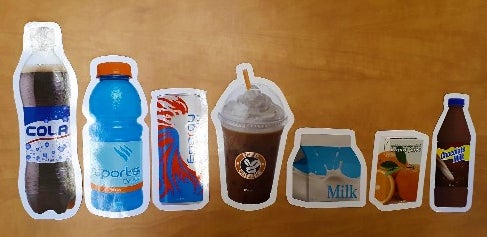 The goal of this activity is to help secondary 1 students learn how to make healthier beverage choices. This activity covers the concepts discussed in the Sip Smart activity offered through the Read What You Eat program for cycle 3 students [add link here], but places a greater emphasis on providing facts about sports drinks and energy drinks.
The goal of this activity is to help secondary 1 students learn how to make healthier beverage choices. This activity covers the concepts discussed in the Sip Smart activity offered through the Read What You Eat program for cycle 3 students [add link here], but places a greater emphasis on providing facts about sports drinks and energy drinks.
Eat Right – Feel Bright 2: Body Image and Healthy Living
 This activity aims to help secondary 2 students become media literate and aware of how societal norms (media, fashion industry, celebrities) can distort our reality of beauty and health. Students are sensitized to the unrealistic portrayal of beauty through social media platforms (Instagram, Facebook) and are encouraged to have a positive attitude towards themselves regardless of appearance. Students are provided with tools to increase nutrition knowledge and make healthier lifestyle choices.
This activity aims to help secondary 2 students become media literate and aware of how societal norms (media, fashion industry, celebrities) can distort our reality of beauty and health. Students are sensitized to the unrealistic portrayal of beauty through social media platforms (Instagram, Facebook) and are encouraged to have a positive attitude towards themselves regardless of appearance. Students are provided with tools to increase nutrition knowledge and make healthier lifestyle choices.
Eat Right – Feel Bright 3: Making Food Labels Work for You
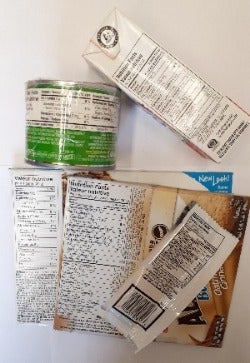 The goal of the activity is to help secondary 3 students learn to read food labels, specifically the ingredient lists and the nutrition facts table. The order of the ingredient list, the various names for sugar, the difference between whole grains and refined grains as well as the importance of fiber are discussed. Cereal boxes are used as an example to demonstrate how to choose which one is more nutritious.
The goal of the activity is to help secondary 3 students learn to read food labels, specifically the ingredient lists and the nutrition facts table. The order of the ingredient list, the various names for sugar, the difference between whole grains and refined grains as well as the importance of fiber are discussed. Cereal boxes are used as an example to demonstrate how to choose which one is more nutritious.
Guidelines are provided to students to ensure that the cereal (and other packaged foods) that they consume are nutritious. The key nutrients emphasized in this activity are fiber and sugar.
EMSB Nutrition Month Campaign
March is Nutrition Month all across Canada and in celebrating this, Nutrition and Food Services has prepared an array of nutrition activities. The campaign aims to promote healthy eating habits on a daily basis by promoting nutrition awareness and increasing nutrition knowledge.

